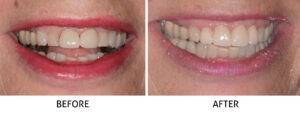“BUT I DON’T WANT ORTHODONTIC TREATMENT!”
CASE STUDY—Loraine H.
I hear this a lot from patients who desire cosmetic dental work. However, sometimes it’s a necessary step in a treatment plan in order to provide the desired outcome the patient wants. Loraine’s case is a great example.
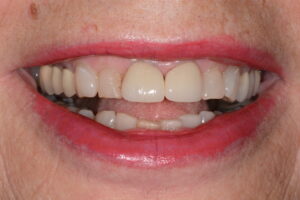
PRE-TREATMENT
When I’m correcting esthetic problems with adult teeth, sometimes the underlying problem is not the teeth themselves but rather the position of the teeth. Loraine’s complaint about her smile was that “the two upper front teeth looked too big.” Natural teeth have proportions that look good to the human eye, and when those proportions become morphed out of the normal range, they look artificial. Loraine’s previous dentist made the crowns for her front teeth because she had a large space between them that she wanted filled. This space—called a “diastema”—can occur when roots grow too far apart or when teeth are under-developed. In Loraine’s case, the roots were too far apart, creating a large diastema between the upper front teeth.
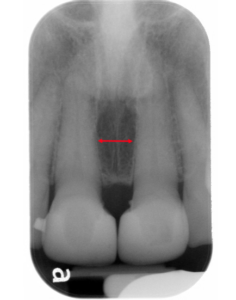
LARGE SPACE BETWEEN ROUTES
The crowns filled the diastema, but had to be made extremely wide in proportion to their length in order to do so. This created “square” teeth in proportion. In other words, whereas natural teeth are roughly one-third longer than their width, the length of Loraine’s front teeth were almost the same dimension as the width.
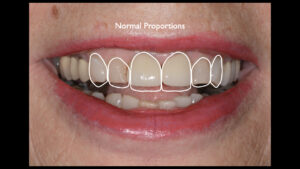
DESIRED PROPORTIONS OF TEETH
The first step in creating new crowns with natural proportions was to move the roots of the two upper front teeth closer together. This could only be accomplished with orthodontic treatment, which meant braces. Loraine didn’t want braces but she did want her teeth fixed properly. She understood that having braces was a short-term sacrifice for a long-term benefit.
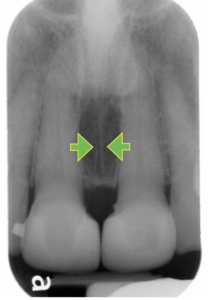
DESIRED MOVEMENT OF ROUTES
Moving the roots of the front teeth closer together also created space on either side of these two front teeth. This made it possible for the lateral incisors to be slightly increased in size, giving a better balance of size variation between the four upper front teeth. These teeth were significantly worn on their edges and needed to be restored anyhow.
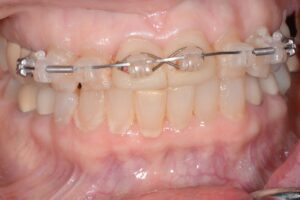
ORTHODONTIC TREATMENT
The orthodontic treatment took approximately six months to complete. Once completed, the four teeth were prepared for crowns and two weeks later, the final crowns were cemented.
Although Loraine didn’t like the idea of having braces on her teeth as an adult, she accepted that the desired treatment outcome was not possible without it. In the end, she was happy to make this small investment in time, enabling her to smile with confidence.
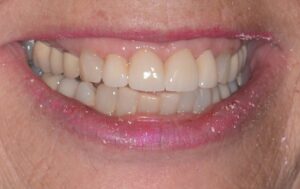
FINISHED CROWNS

